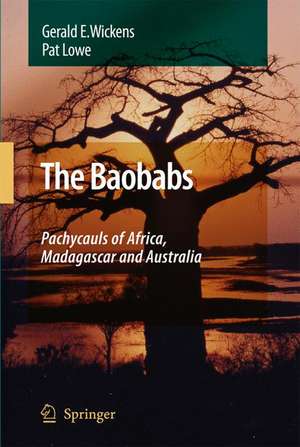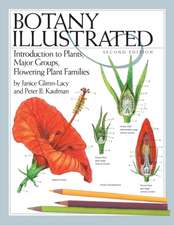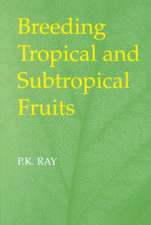The Baobabs: Pachycauls of Africa, Madagascar and Australia
Autor G.E. Wickens Pat Loween Limba Engleză Hardback – 11 mar 2008
| Toate formatele și edițiile | Preț | Express |
|---|---|---|
| Paperback (1) | 2099.59 lei 6-8 săpt. | |
| SPRINGER NETHERLANDS – 19 oct 2010 | 2099.59 lei 6-8 săpt. | |
| Hardback (1) | 2109.41 lei 6-8 săpt. | |
| SPRINGER NETHERLANDS – 11 mar 2008 | 2109.41 lei 6-8 săpt. |
Preț: 2109.41 lei
Preț vechi: 2572.45 lei
-18% Nou
Puncte Express: 3164
Preț estimativ în valută:
403.62€ • 421.42$ • 334.06£
403.62€ • 421.42$ • 334.06£
Carte tipărită la comandă
Livrare economică 04-18 aprilie
Preluare comenzi: 021 569.72.76
Specificații
ISBN-13: 9781402064302
ISBN-10: 1402064306
Pagini: 523
Ilustrații: XL, 498 p.
Dimensiuni: 155 x 235 x 26 mm
Greutate: 1.03 kg
Ediția:2008
Editura: SPRINGER NETHERLANDS
Colecția Springer
Locul publicării:Dordrecht, Netherlands
ISBN-10: 1402064306
Pagini: 523
Ilustrații: XL, 498 p.
Dimensiuni: 155 x 235 x 26 mm
Greutate: 1.03 kg
Ediția:2008
Editura: SPRINGER NETHERLANDS
Colecția Springer
Locul publicării:Dordrecht, Netherlands
Public țintă
ResearchCuprins
Historical Background.- Famous Trees.- Folklore and Tradition.- Food and Fodder.- Human and Veterinary Medicine.- Other Uses of the Baobab.- Art and Iconography.- Baobab Biology.- Natural History.- Conservation.- Cultivation.- Taxonomy.- Distribution and Ecology.- Phytogeography.- Unfinished Business.
Recenzii
From the reviews:
"In this volume, Wickens and Lowe (both, Royal Botanic Gardens, Kew, UK) provide a very comprehensive, technical summary of the genus, including the current state of botanical understanding … and the associated fauna and their use of the trees. … It ends with 55 pages of references and both taxonomic and subjects indexes. … Summing Up: Highly recommended. Upper-division undergraduate, graduate, research, and faculty audiences." (D. Dreyer, Choice, Vol. 46 (4), December, 2008)
"Baobabs are iconic trees of Africa, Madagascar and N.W. Australia … . The book is divided into 15 chapters. In ‘Historical background’ all records are reviewed … . This book is an invaluable resource of baobab knowledge." (Colin C. Walker, Bradleya, Vol. 27, 2009)
"In this volume, Wickens and Lowe (both, Royal Botanic Gardens, Kew, UK) provide a very comprehensive, technical summary of the genus, including the current state of botanical understanding … and the associated fauna and their use of the trees. … It ends with 55 pages of references and both taxonomic and subjects indexes. … Summing Up: Highly recommended. Upper-division undergraduate, graduate, research, and faculty audiences." (D. Dreyer, Choice, Vol. 46 (4), December, 2008)
"Baobabs are iconic trees of Africa, Madagascar and N.W. Australia … . The book is divided into 15 chapters. In ‘Historical background’ all records are reviewed … . This book is an invaluable resource of baobab knowledge." (Colin C. Walker, Bradleya, Vol. 27, 2009)
Textul de pe ultima copertă
This is the only comprehensive account of all eight species in the genus Adansonia. It describes the historical background from the late Roman period to the present. It covers the extraordinary variety of economic uses of baobabs, famous trees, folk traditions and mythology, art associations, life cycle, natural history, cultivation, conservation, distribution and ecology, and phytogeography. There are also appendices on vernacular names, gazetteer, economics, nutrition and forest mensuration.
This book fills a gap in the botanical literature. It deals with a genus that has fascinated and intrigued scientists and lay persons for centuries. It will appeal to scientists and academics as well as tropical horticulturalists, conservationists and general interest readers. It includes all the available scientific information about each of the eight species, and contains a good deal of original research on the history, ethnobotany and biology of the genus. There is even a chapter devoted to areas where further research is required.
This book fills a gap in the botanical literature. It deals with a genus that has fascinated and intrigued scientists and lay persons for centuries. It will appeal to scientists and academics as well as tropical horticulturalists, conservationists and general interest readers. It includes all the available scientific information about each of the eight species, and contains a good deal of original research on the history, ethnobotany and biology of the genus. There is even a chapter devoted to areas where further research is required.
Caracteristici
First and only fully comprehensive account of all eight species of Adansonia Contains much new information Highly interesting for scientists, academics and laypeople









